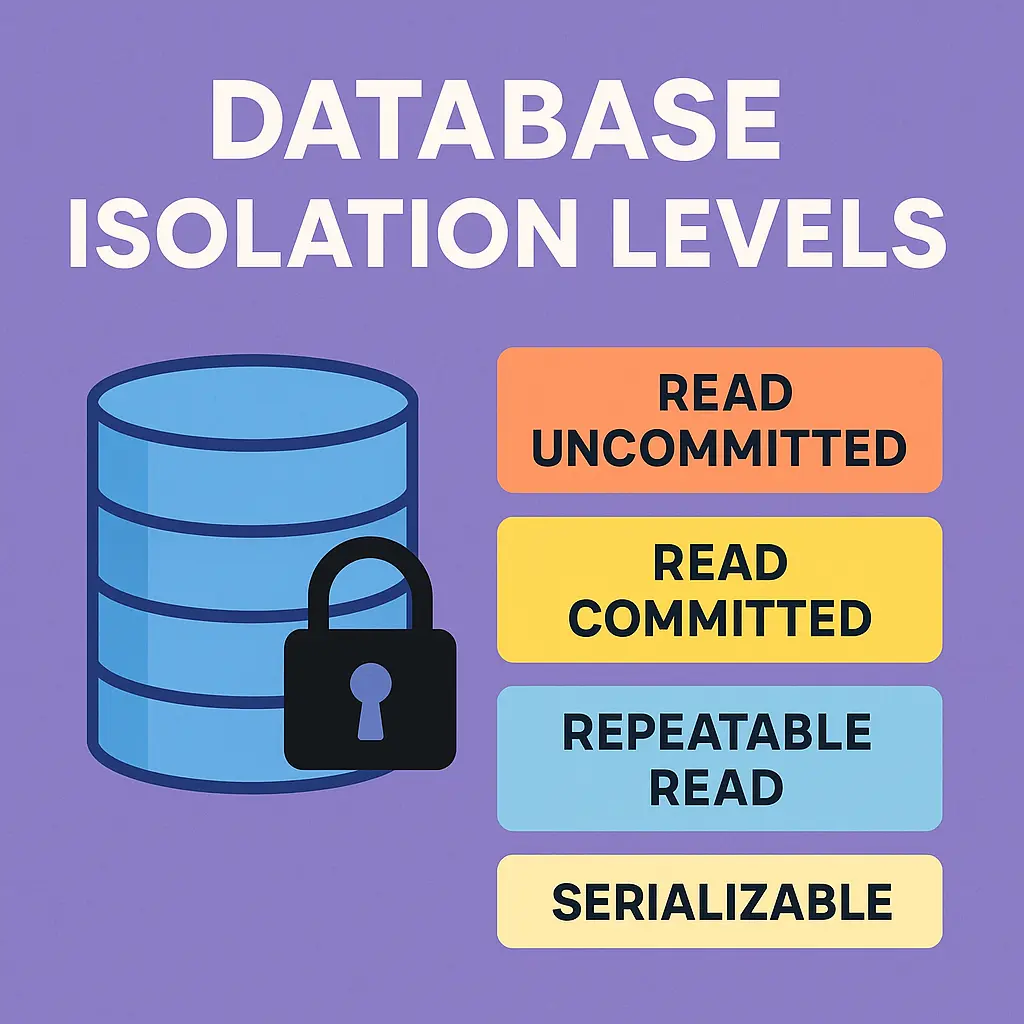
Mastering Isolation Levels in Database Transactions, PCC vs. OCC Explained!
🚀 Mastering Isolation Levels in Database Transactions: PCC vs. OCC Explained!
🤔 Introduction: Why Isolation Levels Matter
Ever wondered why your bank account doesn’t randomly fluctuate when you’re making online transfers? Yep, that’s thanks to isolation levels! Today, let’s dive specifically into isolation levels and concurrency controls (PCC vs OCC) in PostgreSQL, MongoDB, and SQL databases like MySQL and SQL Server. Get comfy, grab a coffee ☕️, and let’s master this without feeling isolated yourself! 😅
🧪 Quick Isolation Refresher
Isolation ensures simultaneous transactions don’t interfere with each other, maintaining database consistency and correctness. common problems like dirty-read, phantom-read and non-repeatable reads can accurs while running consurrent transactions.
🧹 Dirty Read
Problem: Imagine borrowing notes from a friend who later decides they were all wrong! That’s what dirty reads feel like—Transaction A reads data from Transaction B before it’s committed. If B rolls back, A is left with invalid data.
Solution: Use at least “Read Committed” isolation, which ensures you only read data that’s been committed. It’s like waiting for your friend to finalize their notes before copying them. 📝
🔄 Non-Repeatable Read
Problem: Imagine checking your fridge for leftovers twice—first time pizza, second time salad! A non-repeatable read happens when a value is read twice in the same transaction but gets modified in between by another transaction.
Solution: Use “Repeatable Read” isolation. It holds read locks until the transaction ends, ensuring the same data is seen every time—even if someone else is hungry too. 🍕➡️🥗
👻 Phantom Read
Problem: Ever had cookies magically appear in a jar? Phantom reads happen when new rows show up unexpectedly during a transaction—like querying a product list twice and suddenly seeing new entries.
Solution: Use “Serializable” isolation, which locks the range of rows, preventing spooky surprises and ensuring repeatable query results every time.
🛠️ Isolation Levels
| Isolation Level | Dirty Read 🤢 | Non-Repeatable Read 🔄 | Phantom Read 👻 | Consistency 📌 |
|---|---|---|---|---|
| Read Uncommitted 📖 | ✅ | ✅ | ✅ | Low 📉 |
| Read Committed 📚 | ❌ | ✅ | ✅ | Medium 📈 |
| Repeatable Read 🔒 | ❌ | ❌ | ✅ | High 📊 |
| Serializable 🗝️ | ❌ | ❌ | ❌ | Highest 🚀 |
🔐 Locking Strategies Per Isolation Level
| Level | Read Lock 🔍 | Write Lock 📝 |
|---|---|---|
| Read Uncommitted 📖 | ❌ No lock | ❌ No lock |
| Read Committed 📚 | ✅ Shared (short-lived) | ✅ Exclusive (till transaction end) |
| Repeatable Read 🔒 | ✅ Shared (till transaction end) | ✅ Exclusive (till transaction end) |
| Serializable 🗝️ | Shared + Range Lock 🚧 | Exclusive till end 🏁 |
🔄 Concurrency Control Strategies
🛡️ Pessimistic Concurrency Control (PCC)
Analogy: Think of PCC as the strict librarian who says:
“Shhh! No one else can touch this book until I’m completely done!”
🔍 How it works:
- Locks the data before reading or writing.
- Ensures no other transaction can modify or even read the data until the lock is released.
- Prevents:
- Dirty Reads
- Non-Repeatable Reads
- Phantom Reads
😎 Optimistic Concurrency Control (OCC)
Analogy: OCC is your chill friend who says:
“Go ahead, read whatever—but if two of us change it at the same time, we’ll sort it out later!”
🔍 How it works:
- No locks during reads/writes.
- Uses versioning or timestamps.
- At commit time:
- Checks if the data has changed.
- If versions don’t match → Transaction Fails → Retry needed.
🔄 PCC vs. OCC: The Concurrency Face-off!
| Feature | 🛡️ Pessimistic Concurrency Control (PCC) | 😎 Optimistic Concurrency Control (OCC) |
|---|---|---|
| Conflict Handling | Prevents conflict upfront | Checks for conflicts at the end using version/timestamp |
| Performance | Slower due to locking, potential waiting | Faster — no waiting during reads or writes |
| Risk | Can lead to deadlocks if poorly managed | May cause transaction failures at commit |
| Retry Mechanism | Not usually needed | Required if version mismatch occurs |
| Best Used When | Conflicts are frequent, strong consistency required | Conflicts are rare, performance is prioritized |
| Common Isolation Levels | Serializable, Repeatable Read | Read Committed, Snapshot Isolation |
| Example Use Case | Banking systems, high contention workloads | Analytics systems, user dashboards |
PostgreSQL prefers OCC, MongoDB recently adopted OCC, while SQL databases favor PCC.
⚖️ Cross-Database Quick Comparison
| Feature 🛠️ | PostgreSQL 📘 | MongoDB 🍃 | SQL DBs 🛢️ (MySQL/SQL Server) |
|---|---|---|---|
| Isolation Method | MVCC | Snapshot Isolation | PCC (Locks), optional OCC |
| Default Isolation | Read Committed | Single-doc atomic | Repeatable Read / Read Committed |
| Concurrency Control | OCC | OCC | PCC |
| Optimizations ⚡ | Isolation tuning | Transaction tuning | Lock and isolation tuning |
🚦 Optimization Tips
- PostgreSQL: Choose isolation wisely (typically “Read Committed” for speed, “Serializable” for accuracy).
- MongoDB: Limit multi-doc txns, use snapshot isolation for consistency.
- SQL DBs: Adjust isolation settings for transactional efficiency—balance locking overhead with consistency needs.
🌎 Real-Life Scenarios
- Finance 🏦: Serializable isolation ensures your balance doesn’t magically vanish.
- E-commerce 🛒: Snapshot isolation stops phantom items appearing in carts.
- Inventory 📦: Repeatable Read ensures your stock numbers don’t randomly change mid-transaction.
🎯 Conclusion
Isolation levels are essential tools in database management, critical for ensuring consistency, accuracy, and performance. Master these, and you’ll handle database transactions confidently like a principal engineer!